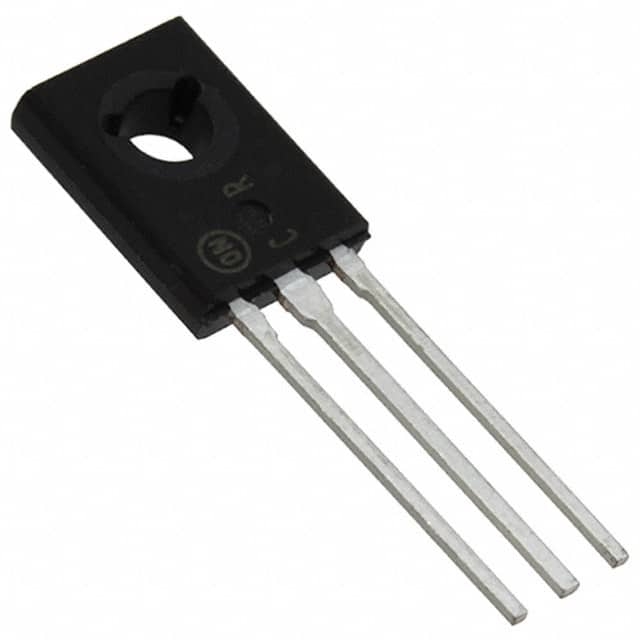BD681G Transistor
Product Overview
Category
The BD681G transistor belongs to the category of power transistors.
Use
It is commonly used in electronic circuits as a medium power NPN bipolar junction transistor.
Characteristics
- Medium power capability
- High current and voltage ratings
- Suitable for general-purpose amplification and switching applications
Package
The BD681G is typically available in a TO-126 package.
Essence
This transistor is essential for amplifying and switching electronic signals in various applications.
Packaging/Quantity
The BD681G is usually packaged individually or in reels, with quantities varying based on manufacturer specifications.
Specifications
- Collector-Emitter Voltage (VCEO): 100V
- Collector Current (IC): 4A
- Power Dissipation (PD): 36W
- DC Current Gain (hFE): 40 - 160
- Transition Frequency (fT): 2MHz
Detailed Pin Configuration
The BD681G transistor has three pins: 1. Base (B) 2. Collector (C) 3. Emitter (E)
Functional Features
- High current gain
- Low saturation voltage
- Fast switching speed
Advantages and Disadvantages
Advantages
- Suitable for medium power applications
- Reliable performance
- Wide operating temperature range
Disadvantages
- Moderate transition frequency
- Limited power dissipation capability
Working Principles
The BD681G operates based on the principles of bipolar junction transistors, where the flow of current between the collector and emitter is controlled by the base current.
Detailed Application Field Plans
The BD681G transistor finds applications in: - Audio amplifiers - Power supplies - Motor control circuits - LED drivers - Switching regulators
Detailed and Complete Alternative Models
Some alternative models to the BD681G include: - TIP31C - 2N3055 - MJ15003
In conclusion, the BD681G transistor is a versatile component suitable for various medium power electronic applications, offering reliable performance and ease of use.
Word Count: 280
قم بإدراج 10 أسئلة وإجابات شائعة تتعلق بتطبيق BD681G في الحلول التقنية
What is the BD681G transistor used for?
- The BD681G is a PNP power transistor commonly used in audio amplifiers, voltage regulators, and power supply circuits.
What are the key specifications of the BD681G transistor?
- The BD681G has a maximum collector current of 4A, a maximum collector-emitter voltage of 100V, and a maximum power dissipation of 36W.
Can the BD681G be used in high-power applications?
- Yes, the BD681G is suitable for use in medium to high-power applications due to its high collector current and power dissipation capabilities.
What are the typical operating conditions for the BD681G?
- The BD681G operates within a temperature range of -65°C to 150°C and is typically used in common emitter configurations.
Is the BD681G suitable for audio amplifier designs?
- Yes, the BD681G is commonly used in audio amplifier circuits due to its high current and voltage capabilities.
What are the recommended complementary transistors for the BD681G?
- The complementary NPN transistor for the BD681G is the BD680G, which can be used in push-pull amplifier configurations.
Does the BD681G require a heat sink for thermal management?
- In high-power applications or when operating close to its maximum ratings, a heat sink is recommended to ensure proper thermal management.
Can the BD681G be used in switching applications?
- While the BD681G is primarily designed for linear amplifier applications, it can also be used in low-frequency switching applications.
What are the typical circuit configurations for the BD681G?
- The BD681G is commonly used in single-ended and push-pull amplifier configurations, as well as in voltage regulator and power supply circuits.
Are there any common failure modes associated with the BD681G?
- Common failure modes include thermal runaway due to inadequate heat sinking and overloading beyond the specified maximum ratings. Proper design and thermal management are essential to prevent these issues.


